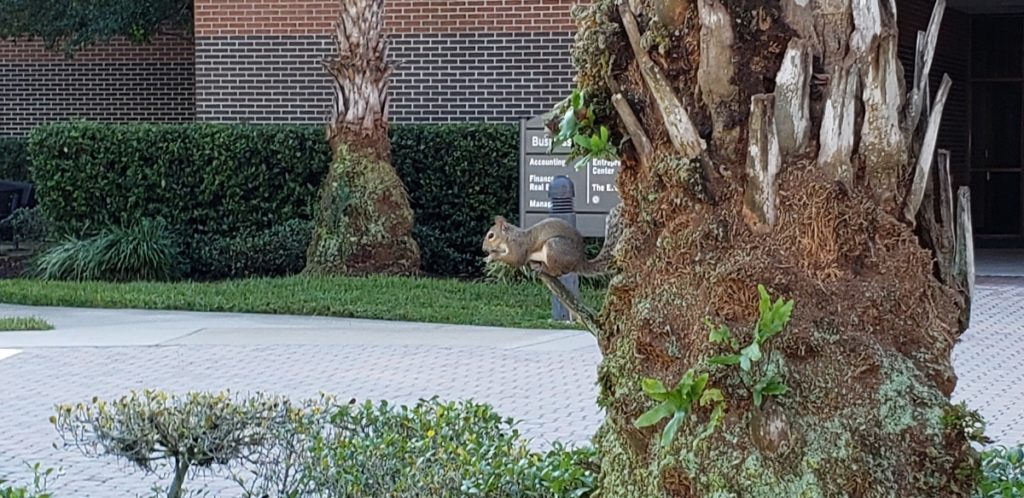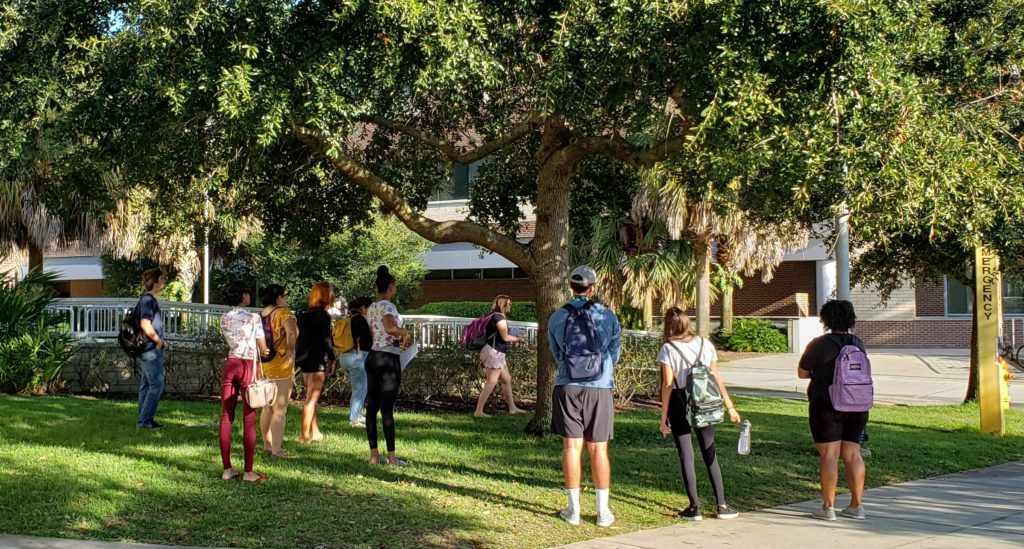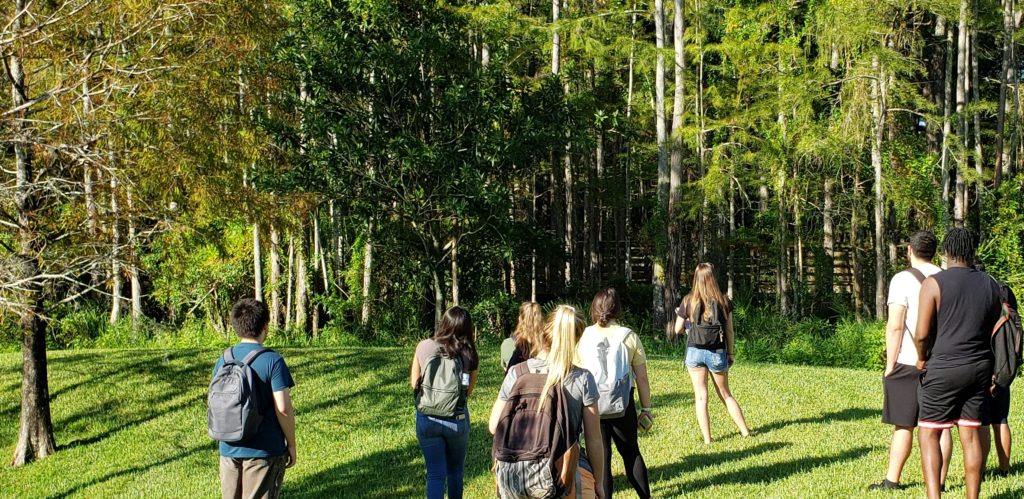This is a lab I use in ANT 2511 – Human Species here at UCF. Briefly, the lab centers on student groups following an arboreal quadruped around campus for one hour. As they do so, they also record it’s movements and activities in 10-minute increments. Since UCF has not been overrun by primates (other than humans, of course), we use a proxy animal – the friendly neighborhood squirrel (eastern gray squirrel). It’s a fun exercise designed to give students a taste of primatology fieldwork. See below for more information and a sample lab worksheet.

The lab is a group exercise and takes place during my 75-minute classes. We begin class with a brief introduction, students self-select into groups of 4-6, pick up a worksheet, and head into the ‘field’ (campus). UCF – like many (most?) North American campuses – has a sizable squirrel population. Students can typically locate a squirrel within 2-3 minutes. I encourage them to not share squirrels. In other words, one squirrel per group.

The lab is basically an animal behavior lab. Students are instructed to pay close attention to behavior, movements, and vocalizations. Never heard a squirrel? Wikipedia has a nice recording. The squirrel’s activity is documented in 10-minute increments on the worksheet. Students are also asked to name their squirrel, just like primatologists!

Squirrels will typically spend a portion of the hour in trees, but also running around campus. All too often students lose sight of their squirrels. In this case, students are instructed to find another squirrel and continue recording their movements, noting the loss of the first squirrel.
Students are graded for following lab instructions, providing sufficient details in their notes, and preparing a 1-paragraph summary of their observations.
You can download a sample of the lab handout here.
